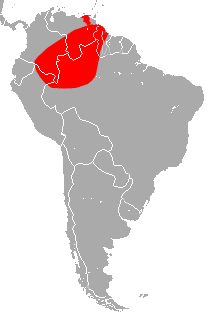| Greater ghost bat | |
|---|---|
| Scientific classification | |
| Kingdom: | Animalia |
| Phylum: | Chordata |
| Class: | Mammalia |
| Order: | Chiroptera |
| Family: | Emballonuridae |
| Genus: | Diclidurus |
| Species: | D. ingens |
| Binomial name | |
| Diclidurus ingens Hernandez-Camacho, 1955 | |
 | |
| Greater ghost bat range | |
The greater ghost bat (Diclidurus ingens) is a bat species found in northwestern Brazil, southeastern Colombia, Guyana, Peru, and Venezuela. [1] [2]
